Until now, humans have only discovered 5% of the mysteries of the vast ocean. Strange creatures that amaze us are the best evidence of the ocean’s mysteries. The wolf eel, sheephead, red-lipped batfish, etc. are among the weirdest fish that humans have ever known living under the ocean.
-Red-lipped batfish
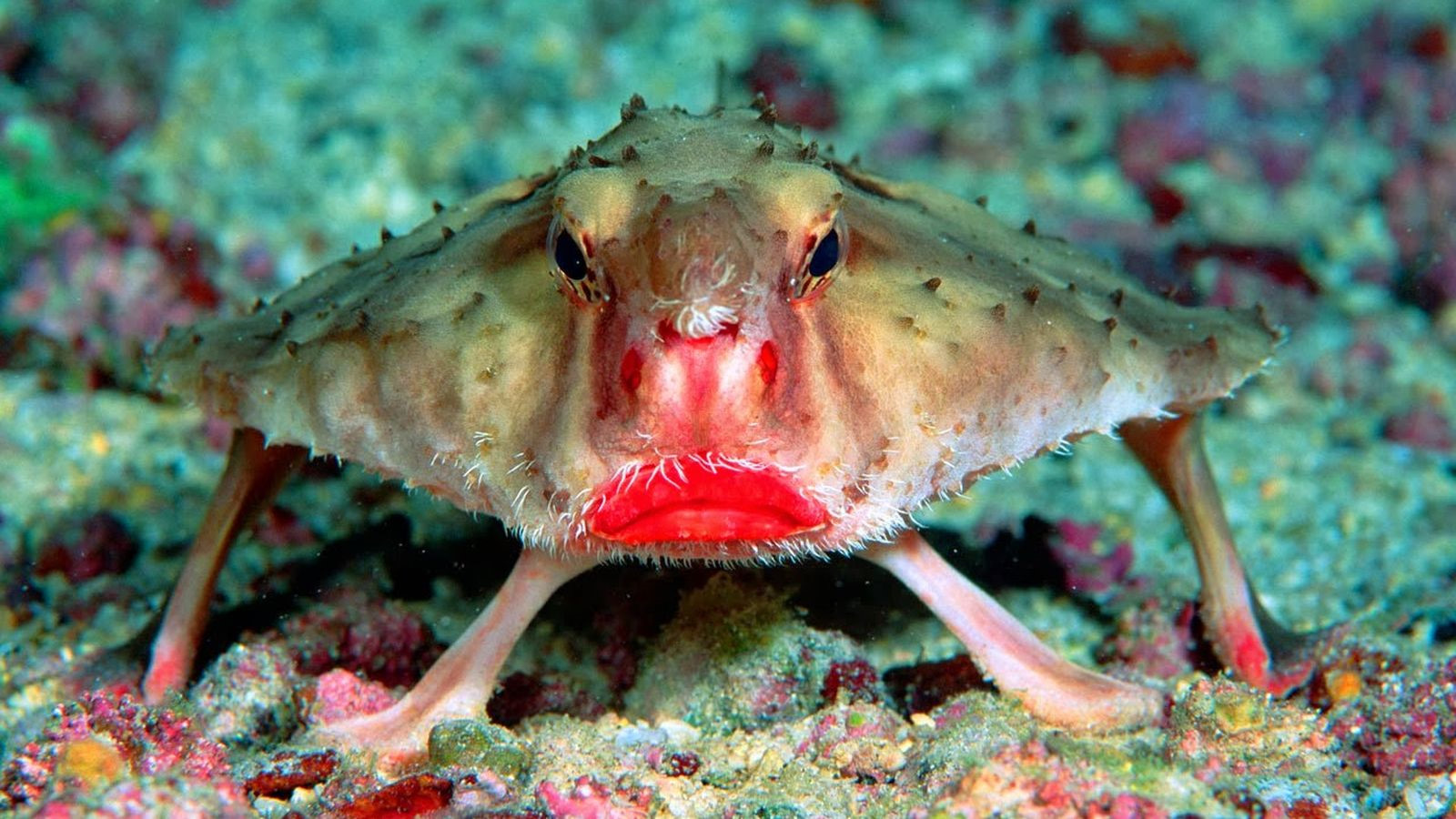
The Red-lipped batfish, scientifically known as Ogcocephalus darwini, inhabits the Galapagos Islands region of Ecuador on the Pacific Ocean, according to the Encyclopedia of Life. This fish species possesses “seductive” lips as if they were lipstick used to attract mates or prey.
We can only find this fish species at a depth of 30m under the sea. The Red-lipped batfish can reach up to 25 cm in length. Particularly, they have pectoral and dorsal fins that resemble limbs, making them swim in a peculiar way but a valuable means for this fish species to move underwater.
-Long-nosed chimaera

In March 2016, Canadian fishermen Scott Tanner discovered a strange fish with a nose nearly as long as its body, glowing green eyes, and wing-like paired fins off the coast of Nova Scotia in eastern Canada.
That was a member of the chimaera fish species, scientifically named Harriotta raleighana, living in deep-sea areas. According to scientists, they are related to sharks, rays, and stingers and are one of the oldest fish species on earth. They usually crawl along the sea floor at depths of about 380-2,600 meters, finding prey by electric sensing on their noses. They use their long noses to push their bodies in the water and flap their fins like wings to move. x
-California sheephead
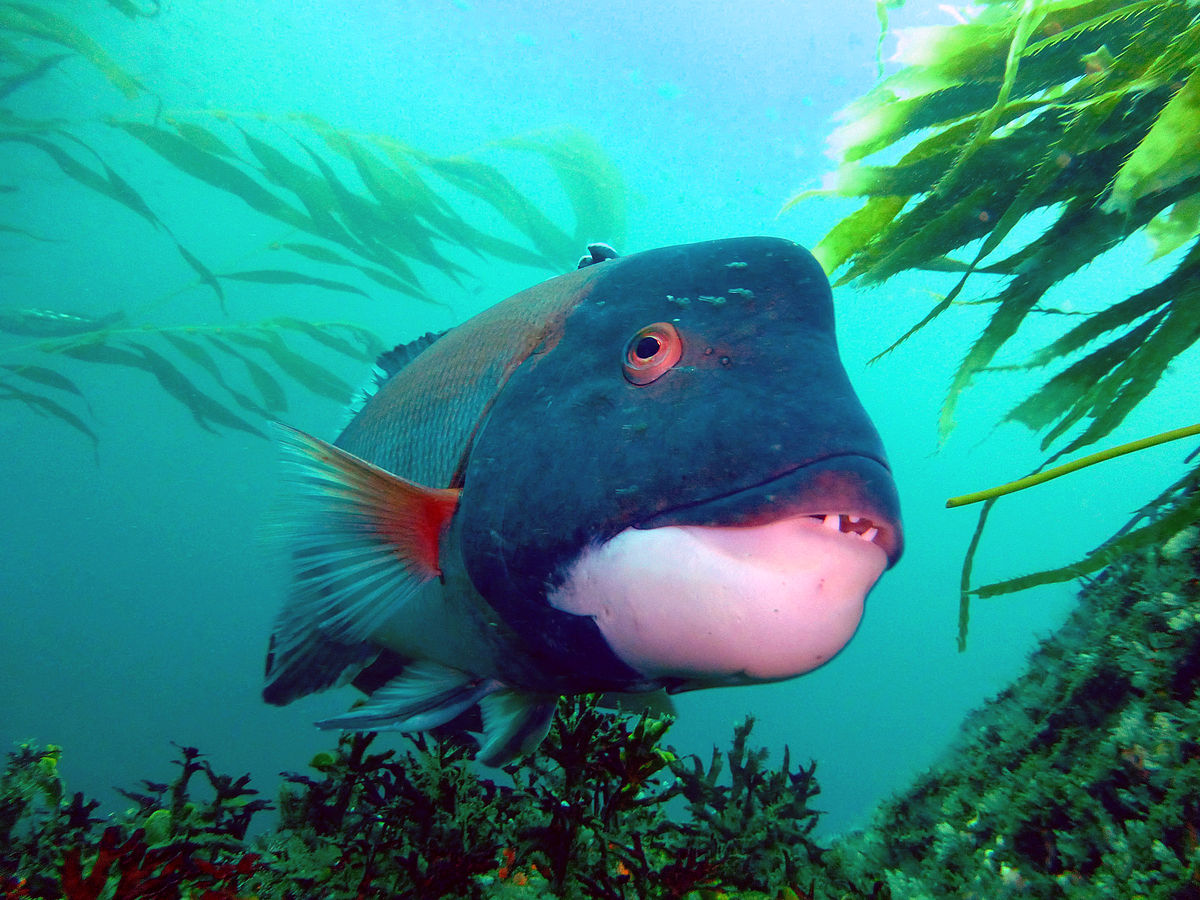
The California sheephead (Semicossyphus pulcher) lives in rocky reef and kelp forest habitats along the Pacific coast from the Channel Islands to Monterey Bay, USA.
When born, all California sheephead are female. At around 8 years old, some will become males and stay that way for nearly 50 years of their life.
-Long-nosed lancetfish
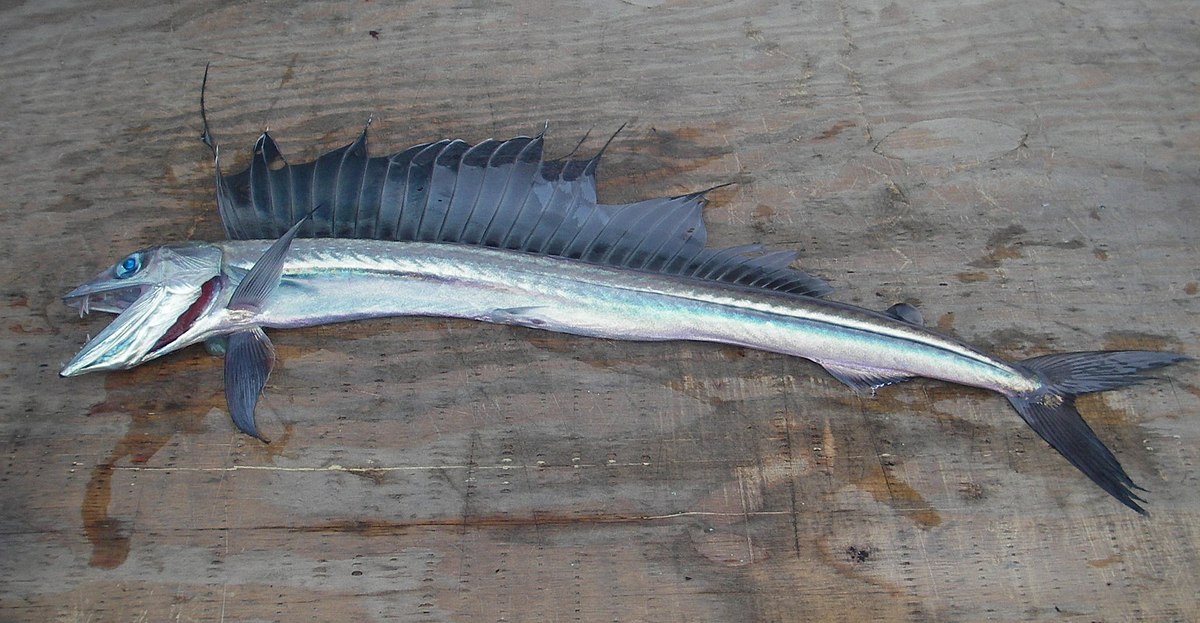
The long-nosed lancetfish (Alepisaurus ferox) is a notorious meat-eating predator with large fang-like teeth and a tall, pointed dorsal fin resembling a sail. During the transitional phase before reaching maturity, long-nosed lancetfish have both male and female reproductive organs. However, scientists have yet to determine whether they maintain this hermaphroditic condition into adulthood.
Long-nosed lancetfish can grow up to 2 meters in length and are nocturnal hunters specialized in preying on shrimp, squid, and smaller fish, sometimes even cannibalizing their own species.
-Lionfish
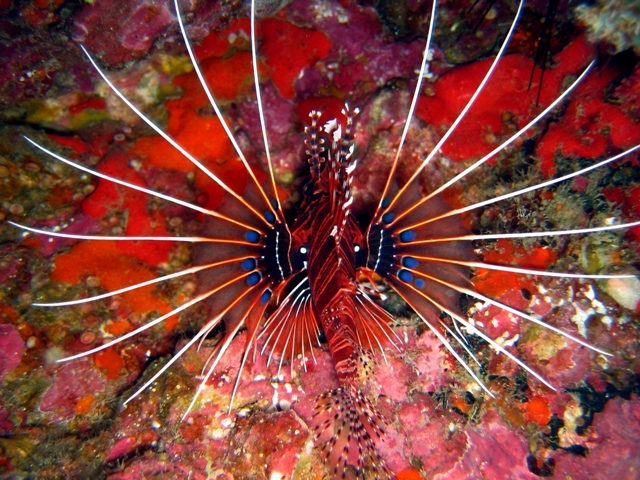
The lionfish, also known as the turkey fish, is a commonly seen fish with a length of 30-38 cm and a body full of venomous spines that help it avoid predators. They reproduce quickly, with a female fish reaching reproductive age at one year old and able to lay about 30,000 – 40,000 eggs in a day.
With no natural predators and rapid reproduction, the population of lionfish has increased rapidly. According to scientists, the most effective way to control the number of this fish species is through human fishing activities. Lionfish can be found in the tropical waters of the southern Pacific Ocean.
-Parrotfish
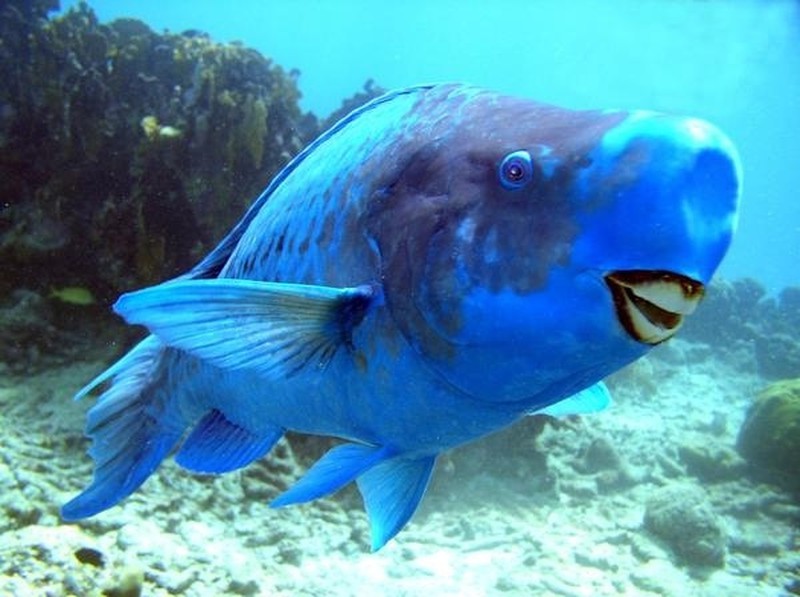
Parrotfish are colorful fish with a mouth that resembles a bird’s beak and a set of strong teeth used to grind coral and eat the algae inside. As a result, most of the sand in the parrotfish habitat is undigested coral that they excrete.
The sex, color, and patterns on the parrotfish body change many times throughout their lives. Particularly when sleeping, this fish species will wrap itself in a cocoon made from a layer of mucus secreted from a part of its head to conceal its scent and avoid nocturnal predators.
-Ocean sunfish
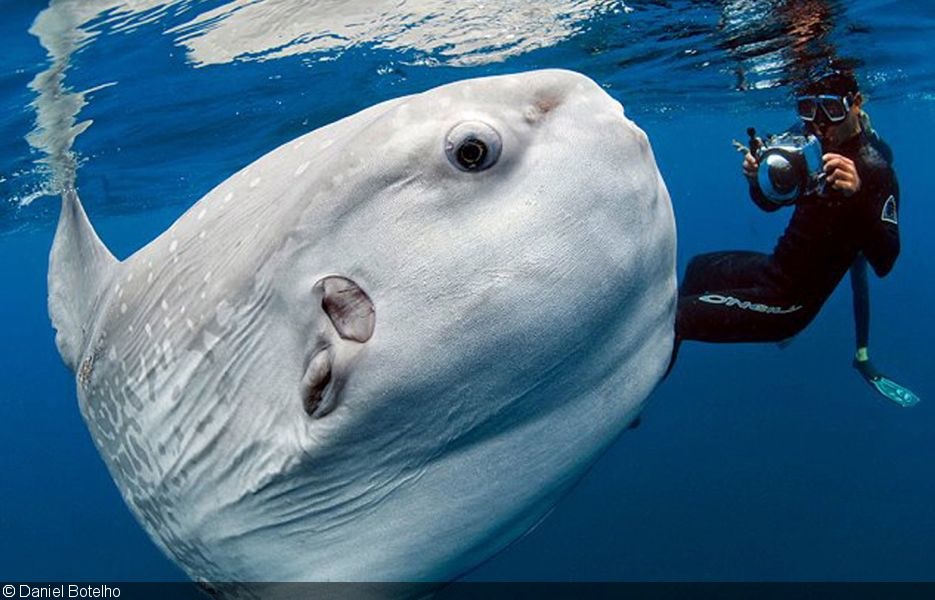
The ocean sunfish, also known as the mola mola, is the world’s largest bony fish, with mature males reaching an average length of 3.5 meters, weighing 1.7 tons, and a dorsal fin span of 4.5 meters. The ocean sunfish has a body shape that is oval or nearly circular and often floats to the surface to bask in the sun’s warmth. When this fish species surfaces, it is often mistaken for a shark due to its large dorsal fin.
Despite its large body, the ocean sunfish has a very small mouth. Without teeth, it uses its tongue to crush jellyfish, small crustaceans, and planktonic organisms.
-Manta Rays
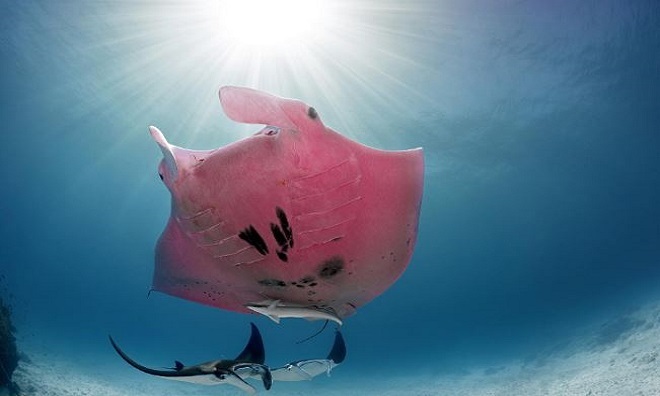
Manta Rays consist of the Reef Manta Ray (Manta Alfredi) and the Giant Manta Ray (Manta birostris), living in tropical, subtropical, and temperate waters of the Indian Ocean, Atlantic Ocean, and Pacific Ocean.
Manta Rays are large, flat-bodied fish with wingspans that can reach up to 9 meters. Their diet consists of plankton. Currently, both species of Manta Rays are listed as vulnerable in the IUCN Red List of Threatened Species.
-Electric Eel
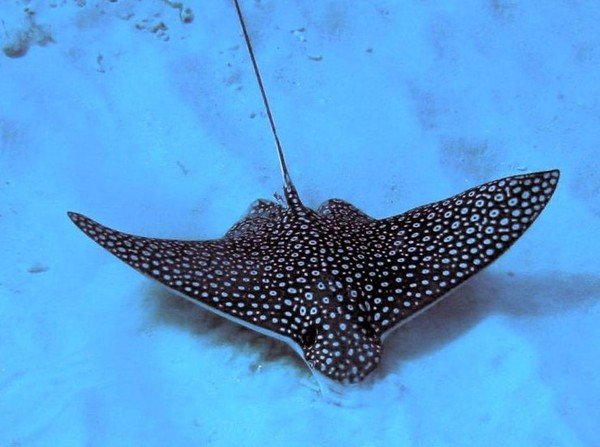
Electric Eels have a flat gray body with black spots. The electric voltage they produce depends on their size, with smaller eels producing less than 10 volts and larger individuals capable of producing up to 220 volts. Electric Eels typically stun their prey with an electric shock. In addition, they use their electrical sensitivity to detect prey, find mates, and communicate with each other.
-Moray Eel
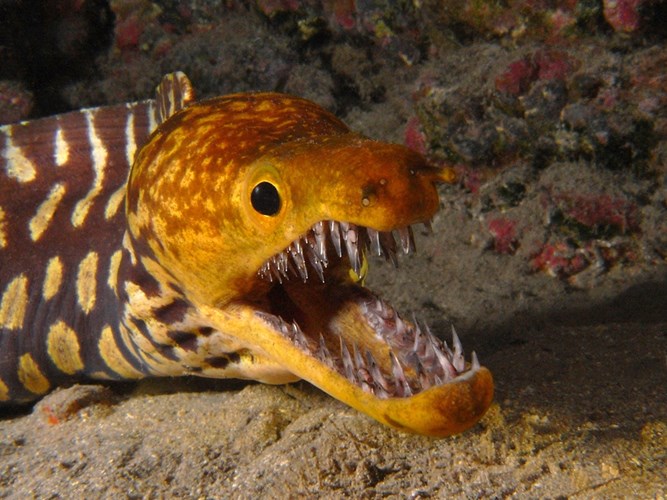
Moray Eels, also known as Sea Eels, consist of about 200 species belonging to the family Muraenidae. They mainly live in marine environments, with some species found in freshwater or brackish water. These fish have a set of strong, sharp teeth that resemble glass and can reach several centimeters in length.
Due to their narrow heads, Moray Eels cannot swallow large prey, so they have a secondary set of teeth inside their mouths to capture and bring the food to their stomachs. Their diet consists of fish, crustaceans, and mollusks.
-Four-eyed Butterflyfish
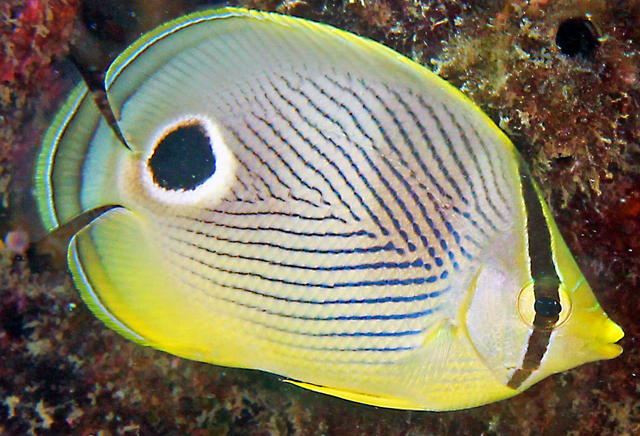
This fish species belongs to the Chaetodon capistratus family and is found in the coral reefs of the Florida Keys, USA. When two Four-eyed Butterflyfish engage in a mouth-to-mouth duel, they form a butterfly-like shape, which is the reason for the name of this species. These fish mate for life and are often observed swimming together as a pair.
-Filefish
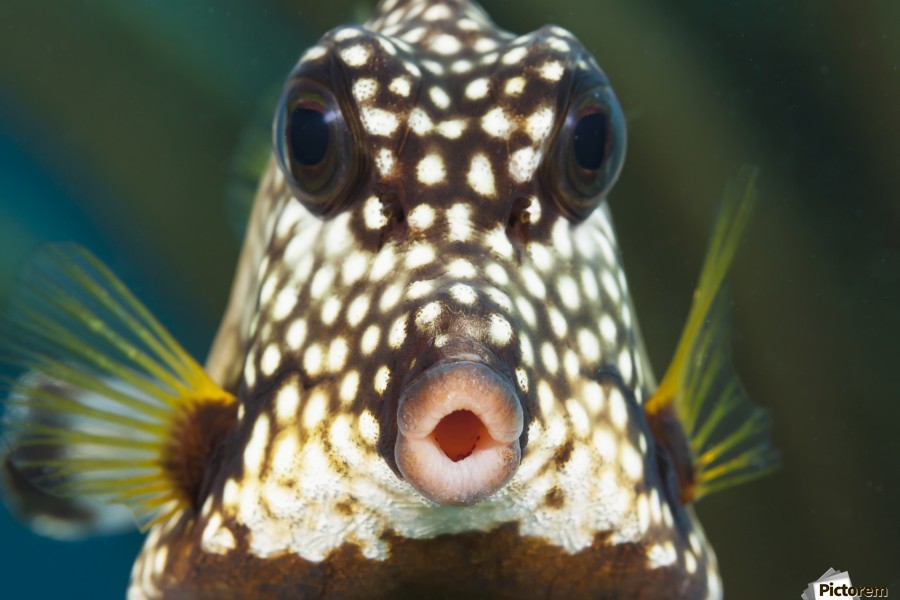
Filefish (Lactophrys triqueter) usually only come in two colors, white and black. However, Dr. Christy Pattengill-Semmens, the director of the Sea Conservation Center in San Diego, USA, captured an unusual yellow-colored individual and named it the golden moon filefish.
-Wolf eel
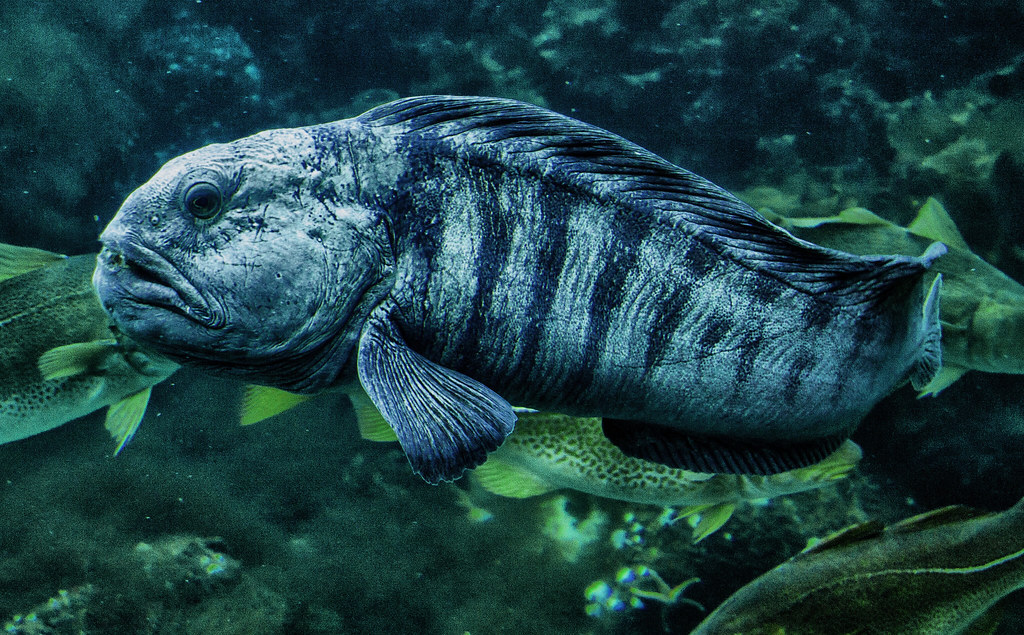
Wolf eel is actually a fish species belonging to the Anarhichadidae family. The distinguishing feature that sets them apart from eels is the posterior pectoral fin behind their head. Young wolf eels stand out in the water with their impressive yellow and purple bodies. As they grow up, these colors fade, giving way to brown and gray. Adult wolf eels often have black spots on their heads and their bodies differ from individual to individual.
They can grow up to 203 cm in length, 18.6 kg in weight, and are found in the northern Pacific Ocean, from the waters of Japan and the Aleutian Islands to northern California. Wolf eels are quite omnivorous. Their diet includes crabs, sea urchins, snails, clams, scallops, and fish. Equipped with strong jaws, they can crush hard foods.

